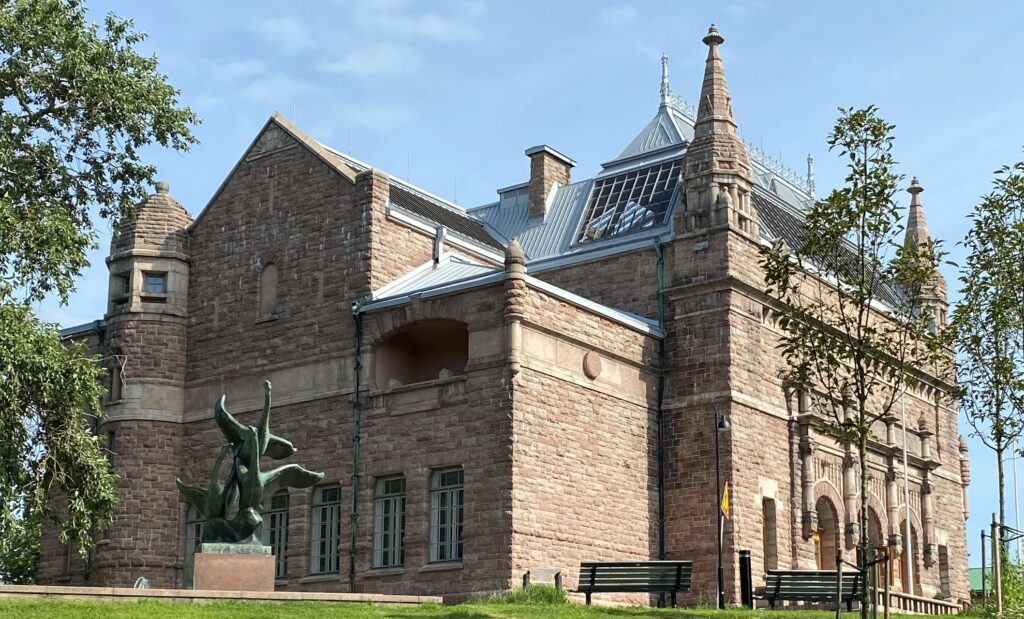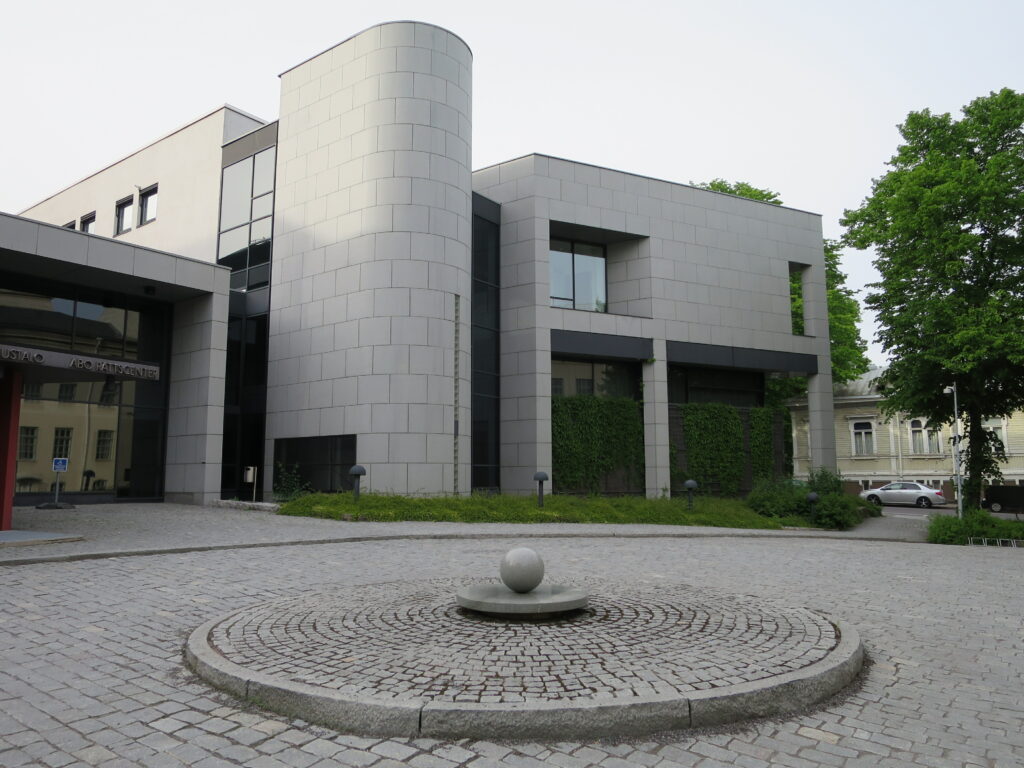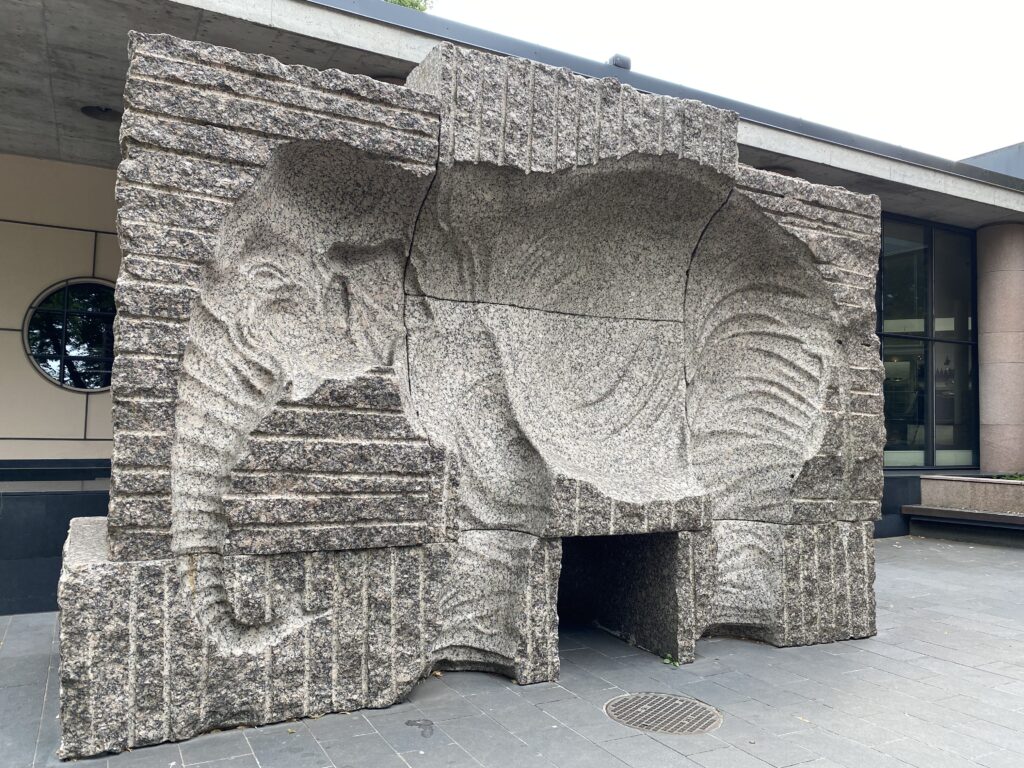28.3.2022
Natural stone has left its mark on Turku
Natural stone as a building material is beautiful, versatile, reusable and has an almost eternal durability. Natural stone has been used for various types of construction all throughout Turku’s history.
Examples of the use of natural stone in buildings from the Middle Ages to the present day are shown in a new report by Olavi Selonen and Carl Ehlers, docent and professor emeritus, respectively, at the Department of Geology and Mineralogy at Åbo Akademi University. The report contains an extensive catalogue of natural stone objects in Turku and is published by the association KIVI – STEN rf.
– Turku Castle and Turku Cathedral are unique medieval buildings built entirely or partly of natural stone. The building material consists of various local rocks, partly unprocessed loose boulders picked up near the construction site, says Selonen.
The Turku region has played an important role in the development of the Finnish natural stone industry. Turku Castle was renovated 1556–1563 under the leadership of Antonius Timmerman, a Dutch stonemason who is considered to be a pioneer in processing Finnish natural stone. One of the largest, and architecturally most ambitious, projects in our country, the construction of the Old Academy Building, began in 1802.
– The Swedish stonemason Nils Stenstam founded Finland’s first mechanical stone processing plant in Turku in 1805 to manufacture the massive granite pillars of the Old Academy Building’s Ceremonial Hall and entrance vestibule, the raw materials for which were quarried from Vartiovuori Hill, says Selonen.

In the middle of the 19th century, a prison was built on Kakolanmäki Hill with facades made entirely of solid granite quarried from the rock at the construction site. The Kakola granite became an important raw material for construction in Turku.
Turku also has good examples of National Romantic-style natural stone architecture from the early 20th century. These include the art museum on Puolalanmäki Hill and the Fire Insurance Company Building (later Turku City Office, among other things) by the riverbank. The local red granite on the art museum’s facade was quarried from Skanssi, while the grey granite on the facade of the Fire Insurance Company Building is from Uusikaupunki.
– Modern use of natural stone can be seen in both building facades and in milieu construction. There are a dozen buildings in Turku that have a solid natural stone facade. A beautiful example is the Turku Courthouse on Sairashuoneenkatu, designed by Pekka Pitkänen. The facade is made of grey granite from Kuru, says Selonen.

Other examples are the facade of the Kivikukkaro building, which is made of Finnish marble from Lapland, the facade of the Sampo building, red rapakivi granite from Taivassalo, and the facade of the Aleksandra office building, a light quartzite from Lokka. The newest natural stone facade is in the new Hamburger Börs building, which is clad with German limestone.
– More good examples of the use of natural stone include the Stockmann department store’s lower facade towards Kristiinankatu and the lower facade of the building with the Turku service point on Puolalankatu. In these two facades, the stone material is brown rapakivi granite from Ylämaa, with its unique rapakivi structure, says Selonen.
A highlight in milieu construction is Vähätori Square, which was renovated into an urban space in 2009. Recycled cobblestones of local granite have been used in the paving. The sidewalks of Vähätori Square are covered with red granite from Lieto. The market square in Turku is currently being renovated, and the paving of the new square consists of recycled local granite cobblestone and imported granite slabs from China.
Natural stone has traditionally been used for statues, sculptures and monuments. There are several examples of statues made of solid stone in Turku, such as Väinö Aaltonen’s Turun Lilja, Viljo Mäkinen’s Alli the Cat Lady, Hanna Vihriälä’s Elephant and Laila Pullinen’s Ikaros. In other words, anyone who wants to get acquainted with beautiful and varied uses of natural stone should head to Turku.

